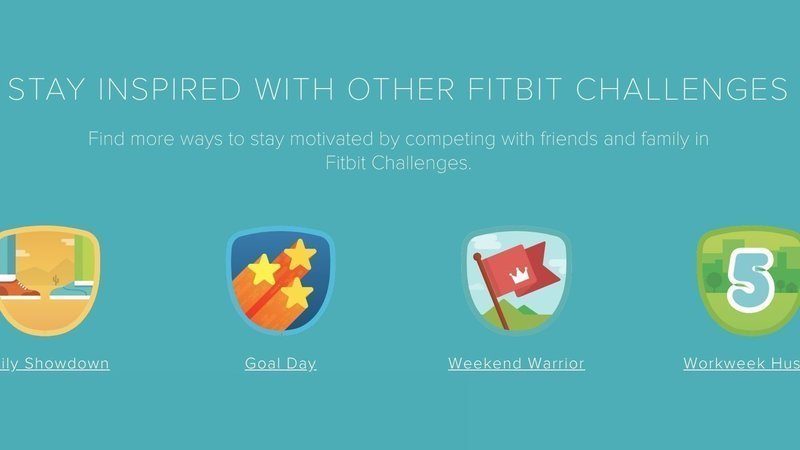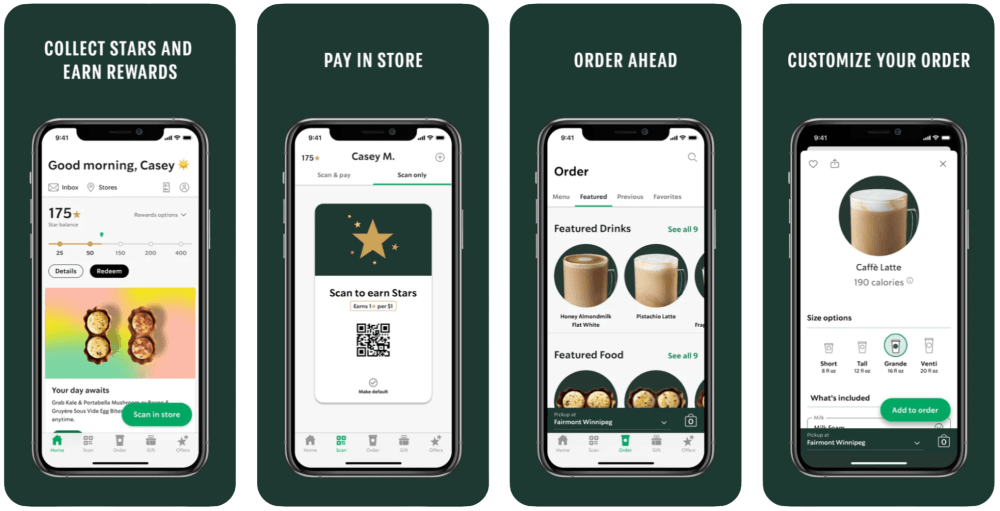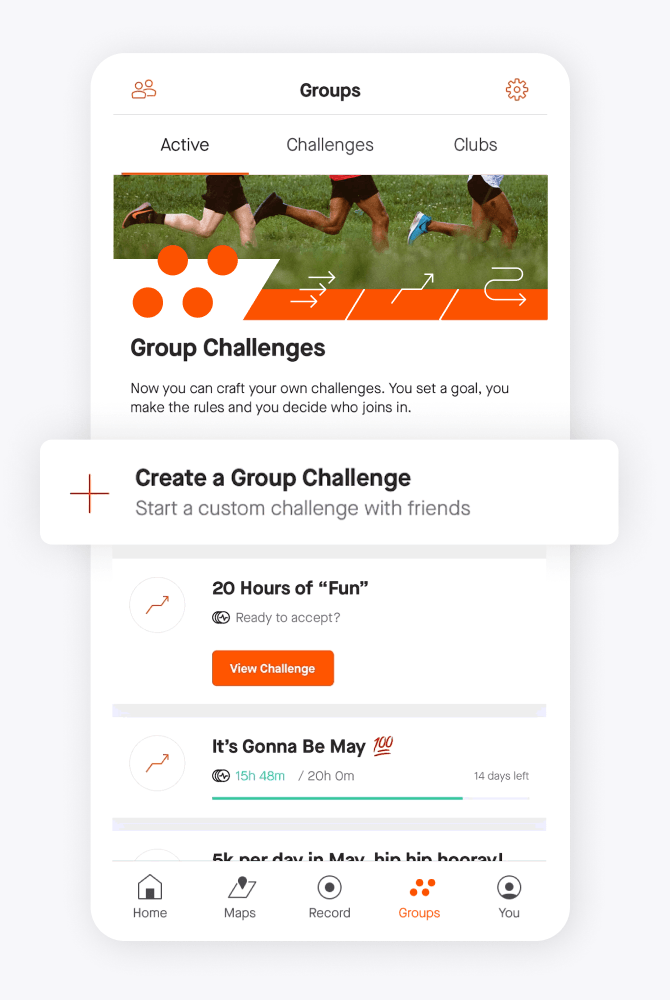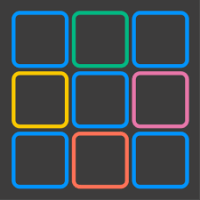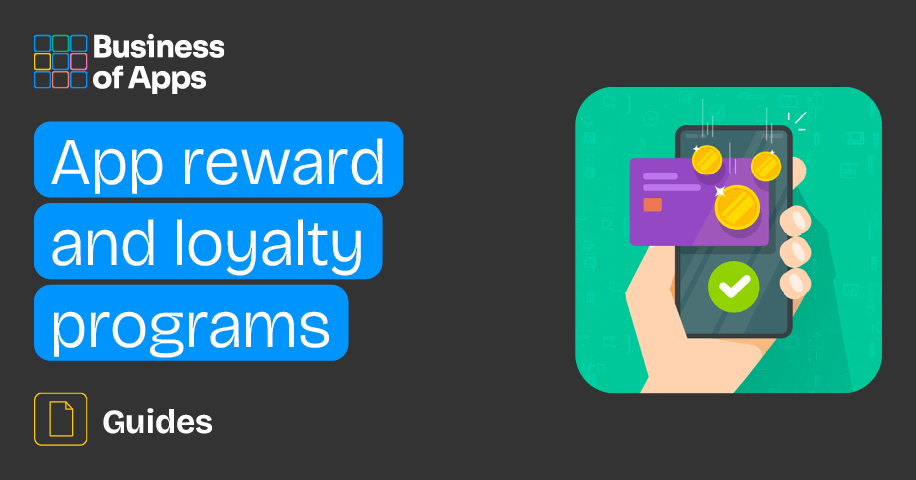
You’ve successfully built and launched an app. You’ve efficiently put in place a streamlined user acquisition strategy and have started getting traction in the app stores. But something is not quite right—you are definitely acquiring new users, but they aren’t really sticking around for too long, are they now?
This is where something we’ve already talked about comes into play, namely app retention. Since we’ve already covered everything you need to master your app’s retention strategy, I will keep things short and sweet here. Suffice it to say that one of the most efficient engagement strategies and a surefire way to boost your app’s retention rate is to implement reward and loyalty programs.
In the ever-evolving, rapidly changing, never-sleeping landscape of mobile apps, the strategic implementation of reward and loyalty programs transcends mere user acquisition to form the cornerstone for sustained engagement and the cultivation of unwavering brand loyalty.
Fire Up Your Growth!
Moburst propelled leading brands like Google, Reddit, and Uber to the next level. Let’s ignite your Success journey today!
Claim Your FREE Growth Fuel!So, let’s talk about app reward and loyalty programs. Join me in an in-depth exploration of the multifaceted world of app rewards, where we dissect their nuances and unveil the strategies that transform them into not just a marketing tool but a pivotal component of long-term user-app relationships.
What are app reward and loyalty programs?
App reward and loyalty programs are highly structured initiatives implemented within mobile apps to systematically recognize and incentivize user engagement over an extended period of time.
It is one of the most effective ways to retain users, ensuring your users stick around for more than just one or two sessions and guaranteeing your UA budget doesn’t go to waste. These programs are designed to foster long-lasting relationships between users and an app, establishing a continuous and mutually beneficial interaction.
To simplify things, app reward and loyalty programs are not just about providing perks—they are a dynamic strategy for building sustained relationships, enhancing user experiences, and ensuring the long-term success and viability of your mobile app.
Download our App Engagement Buyer’s Guide, covering all the trends, strategies, and metrics you need to know to ace app engagement in 2025.App Engagement Buyer's Guide
Why are loyalty programs important?
Understanding the profound importance of reward and loyalty programs is pivotal for both app marketers and developers. So, let’s have a look.
User lifetime value (CLV)
App reward and loyalty programs significantly contribute to increasing CLV by fostering long-term relationships with users.
Consider a fitness app employing personalized challenges, motivating users to stay active and engaged, thereby ensuring a prolonged app usage period.
User advocacy
Satisfied, rewarded users become brand advocates, spreading the word about your brand and the great, memorable experiences it offers.
Dropbox‘s referral program, rewarding users with additional storage space for referring friends, not only enhances satisfaction but also amplifies brand visibility through referrals and word-of-mouth recommendations.
Competitive edge
In a saturated market with millions of apps flooding the stores, offering unique and compelling rewards gives your app a distinctive competitive advantage.
Components of a stellar app reward and loyalty program
We now have a rough idea of what app reward and loyalty programs are. So, let’s have a look at their key components as a way of digging even deeper.
Recognizing user actions
App reward and loyalty programs hinge on recognizing and rewarding specific user actions or behaviors within your app. These actions can range from making purchases and consistent app usage to referrals, social sharing, and other predefined interactions.
By offering a reward for completing a specific action, you encourage users to engage with the app, while helping them unlock its full potential and value, which, in turn, fosters loyalty and ensures users stick around for longer.
You get the users’ engagement and loyalty, and they get the reward, which also increases the likelihood of referrals and word-of-mouth recommendations.
Incentivizing user engagement
As I’ve just explained, the core objective is to incentivize users to engage with the app consistently. This is achieved by offering tangible rewards, exclusive benefits, or personalized experiences based on users’ activities. The incentives serve as motivators, encouraging users to explore and use the app regularly.
Long-term relationship building
Unlike one-time promotions, these programs are strategically designed for long-term relationship building. By providing ongoing value and incentives, app marketers and developers alike aim to cultivate user loyalty, ensuring that users not only continue using the app but become advocates who actively promote it within their networks.
Data-driven personalization
Successful programs leverage user data to personalize the reward experience. By understanding individual preferences, behaviors, and usage patterns, app developers can tailor rewards to each user, enhancing the overall effectiveness of the program and creating a more personalized user journey.
Structured reward systems and multi-tiered approaches
Loyalty programs often incorporate structured reward systems where users earn points, credits, or other virtual currencies for completing specific tasks or reaching milestones. These earned rewards can then be redeemed for discounts, exclusive content, upgrades, or other benefits within the app.
At the same time, many loyalty programs adopt multi-tiered structures where users progress through different levels based on their engagement and loyalty. Each tier unlocks progressively greater rewards, creating a sense of achievement and motivating users to ascend to higher levels.
Communication and transparency
Clear communication is integral to the success of an app reward program. App marketers and developers have to regularly communicate with users about available rewards, upcoming promotions, and program updates. Consequently, transparency ensures that users are informed and engaged, fostering a sense of trust and exclusivity.
Consider the above as your how-to list to success. Check all the boxes and your app reward program is guaranteed to be a massive hit with your users.
Examples of app reward and loyalty programs
Let’s delve into specific examples that highlight the diverse and innovative approaches adopted by various apps in implementing reward and loyalty programs.
Fitbit Challenges
Fitbit incorporates challenges and achievements within its app to encourage users to stay active. Users can compete with friends, earn badges, and participate in virtual challenges, adding a gamified element to the fitness tracking experience.
Fitbit challenges
Source: Fitbit
Uber Rewards
Uber Rewards is a tiered loyalty program where users earn points for every dollar spent on Uber Rides and Uber Eats. These points unlock benefits such as discounts, priority support, and flexible cancellation policies, enhancing the overall user experience and ensuring that users will keep coming back time and time again.
Uber Rewards
Source: Uber
Starbucks
Starbucks‘ mobile app rewards users with stars for every purchase, leading to tiered membership levels with increasing benefits. Users can redeem stars for free drinks, food items, and exclusive offers, creating a sense of value and exclusivity.
Starbucks stars
Source: Starbucks
Benefits
App reward and loyalty programs are powerful tools that extend beyond mere user acquisition, offering a myriad of benefits that contribute to the long-term success and sustainability of mobile apps. Let’s dissect the tangible benefits of a well-crafted app reward and loyalty program.
Increased user retention
App reward and loyalty programs are instrumental in enhancing user retention rates. By offering tangible incentives, exclusive benefits, or personalized experiences, these programs create a compelling reason for users to continue engaging with the app over an extended period. Users are motivated to stay loyal, earn rewards, and explore the app’s features consistently.
Example: Fitness apps like Strava employ personalized challenges and achievements, encouraging users to maintain an active and consistent presence on the platform. As users strive to achieve goals and earn rewards, they are more likely to remain dedicated to the app.
Strava challenges
Source: Strava
User satisfaction
Satisfaction is at the core of successful loyalty programs. By recognizing and rewarding user actions, these programs not only add value to the user experience but also create a sense of appreciation. Users feel acknowledged for their loyalty and engagement, leading to increased overall satisfaction with the app.
Example: Netflix‘s recommendation algorithm is designed to enhance user satisfaction. By suggesting content based on individual preferences, users experience a more personalized and enjoyable viewing journey, contributing to higher satisfaction levels.
Brand loyalty
App reward and loyalty programs are potent tools for cultivating brand loyalty. As users consistently interact with the app and reap the benefits of loyalty rewards, they develop a strong emotional connection to the brand. This connection goes beyond functional aspects, fostering a sense of loyalty and affinity that encourages users to choose the app over competitors. Higher brand loyalty also leads to more referrals and word-of-mouth recommendations.
Example: In the gaming industry, the use of in-app currency and exclusive content is a common strategy. Users become not just players but enthusiasts, developing a deep-seated loyalty to the brand and its unique offerings.
Data-driven insights
Loyalty programs are not just about rewards but also about gathering invaluable data on user preferences and behaviors. As users engage with the app and participate in the loyalty program, marketers gain access to a multitude of data points—from user preferences to behavior and usage patterns. This data can be analyzed to refine the app, personalize user experiences, and inform future marketing and development strategies.
Example: Starbucks’ app tracks user preferences and purchasing behavior, allowing the company to offer personalized recommendations and promotions based on users’ unique tastes. This data-driven approach creates a more tailored and enjoyable experience for users.
Elevated user experience
App reward and loyalty programs contribute to an elevated user experience by adding an extra layer of value. Beyond the core functionalities of the app, these programs offer users additional benefits, exclusive content, or personalized rewards that enhance their overall interaction with the app.
Example: Airbnb’s Superhost program not only rewards hosts but also enhances the experience for guests, ensuring quality stays and positive reviews.
App reward and loyalty programs, when thoughtfully implemented, go beyond transactional interactions. They transform user-app relationships into dynamic, ongoing engagements. By increasing user retention, fostering satisfaction, building brand loyalty, providing data-driven insights, and elevating the overall user experience, these programs become integral components of an app’s strategy for long-term success in a competitive digital landscape.
Challenges
Creating a successful reward program is not without its hurdles and challenges. Even the most meticulously designed reward and loyalty initiatives can encounter obstacles that require thoughtful and strategic solutions. Let’s delve into some common challenges and explore how savvy app marketers address them.
Implementation hurdles
- Challenge: Initiating a reward program without a clear objective or a well-defined structure is a common pitfall and can lead to confusion and disengagement among users.
- Solution: Whether the aim is to increase engagement, referrals, or time spent on the app, structuring the program around activities users genuinely enjoy is key. So, remember to take your time to clearly outline the goals of your app’s reward program and then, and only, can you proceed to thinking about the how, where, when, and why of implementation.
Dropping user engagement
- Challenge: Sustaining user interest over time is a perennial challenge. Users may lose enthusiasm if the reward program lacks variety or fails to adapt to evolving user expectations.
- Solution: Marketers and developers alike can combat engagement challenges by introducing dynamic elements and evolving rewards. The introduction of new and exciting rewards, challenges (where the app allows it), or exclusive content can rekindle user interest and maintain a high level of engagement.
Resource allocation and balancing rewards
- Challenge: Striking the right balance between offering valuable rewards and maintaining profitability is crucial. Overly generous rewards may impact an app’s bottom line.
- Solution: Many successful loyalty programs, like those in the airline industry, carefully balance rewards with the potential for increased user spending. For example, airlines may offer free flights as rewards, but the cost is offset by increased spending and loyalty from users. Finding this equilibrium ensures that users are adequately incentivized while the app remains financially sustainable.
Competition and saturation
- Challenge: In competitive markets, breaking through the noise and offering unique rewards becomes increasingly challenging as users are inundated with various loyalty programs.
- Solution: Innovative apps, such as Uber, constantly evolve their loyalty programs by adding new and exclusive features to stay ahead of the competition. The ability to adapt and introduce fresh elements ensures that the app remains compelling and relevant in a saturated market, maintaining user interest and loyalty.
Addressing these challenges requires a combination of strategic planning, ongoing optimization, and a keen understanding of user behaviors. Successful app marketers and developers approach these hurdles not as obstacles but as opportunities to enhance the overall effectiveness and sustainability of their reward and loyalty programs.
Best practices and tips
Strategic implementation is the linchpin of a successful loyalty program. So, let’s explore our best practices and top tips for launching and managing app reward programs.
Define objectives
Begin by clearly outlining the goals of your reward and loyalty program. Whether the primary goal is centered around user acquisition, engagement and long-term loyalty, or referrals, a well-defined roadmap establishes the program’s purpose.
For instance, if the primary objective is user acquisition, structuring the program around referral rewards can be a strategic move, creating a mutually beneficial scenario for both the referrer and the referred user.
If the goal is engagement, however, consider offering rewards tailored to your app’s type and category that also incentivize people to return time and time again.
Choose appropriate rewards
The effectiveness of your loyalty program hinges on its alignment with user preferences. Adapting rewards to suit the needs and wants of your user base establishes a meaningful connection between users and your app, amplifying the perceived value of your loyalty program.
Appropriate rewards not only incentivize desired user behaviors but also contribute to user satisfaction. By offering rewards that hold genuine appeal, the loyalty program becomes a meaningful and engaging component of the overall user experience, fostering long-term engagement and loyalty.
Seamless integration
Ensure the loyalty program is seamlessly integrated into the user experience. Users should be able to earn and redeem rewards effortlessly, both in-app and through other channels—email, SMS, social channels, and so on.
A smooth, frictionless integration encourages regular participation, making the loyalty program an integral part of the overall user journey and enhancing user engagement. A smooth and integrated experience, for its part, reinforces the value of the loyalty program, contributing to its effectiveness in retaining and attracting users.
User-friendly interface
The success of a loyalty program is closely tied to the simplicity of its interface. A user-friendly design enhances the overall experience. The interface should be intuitive, making it easy for users to track and redeem rewards, thus ensuring a seamless and enjoyable experience. This simplicity, in turn, contributes to user satisfaction and loyalty, reinforcing the positive perception of the app.
Personalization
Personalization plays a pivotal role in the success of app reward and loyalty programs. By tailoring rewards to individual user preferences, these programs foster higher engagement and satisfaction. Moreover, personalization goes beyond offering generic incentives—it creates a unique and positive emotional connection between users and the app.
This approach not only enhances user retention but also allows for strategic resource allocation, making the loyalty program more efficient and cost-effective. In a competitive landscape, personalization provides a crucial advantage, setting an app apart by delivering a more tailored and meaningful user experience.
Frequent communication
Frequent and transparent communication is vital as it builds trust, keeps users informed, and fosters a sense of transparency. In the context of app reward and loyalty programs, regular communication ensures users are aware of available rewards, upcoming promotions, and program updates.
This transparency creates a positive user experience, enhancing their trust in the app and its loyalty initiatives. It also provides clarity on how the program works, encouraging continued participation and reinforcing the value users derive from their engagement. Ultimately, transparent communication is a cornerstone for establishing and maintaining a strong, trustworthy relationship between the app and its users.
Social integration
Integrating social elements into your loyalty programs, such as sharing achievements or milestones on social media, can amplify their impact. Fitbit, for example, allows users to share their fitness achievements, fostering a sense of community and encouragement.
FAQs
What types of rewards work best?
A: The effectiveness of your app reward program is context-dependent. For a fitness app, unlocking premium workout plans might be more compelling than offering discounts on unrelated products. The ultimate goal here is to align rewards with user interests. A good starting point is to check what your competitors are doing and see if you can emulate them.
How can I measure the success of my loyalty program?
A: Success metrics encompass user retention rates, referral rates, participation levels in loyalty-related activities, and the overall impact on user lifetime value. Analyzing these metrics provides insights into the program’s impact on user behavior and app performance.
However, context is extremely important here again—referral rate is obviously not going to be a crucial metric for your app if you are not trying to get your users to refer their friends and family.
Are there industry-specific considerations when crafting a loyalty program?
A: Absolutely. Tailor rewards to align with the nature of your app and the demographics of your user base. For a travel app, for instance, consider rewards like discounts on accommodation or exclusive travel guides to cater to your audience’s specific interests. Again, it’s all about context in the end.
Conclusion
This detailed guide aims to equip app marketers and developers alike with the knowledge and strategies needed to master the art of app loyalty programs.
From understanding these programs’ intrinsic importance to navigating the challenges of implementing an app reward program, the above guide provides a comprehensive roadmap for building enduring user-app relationships that stand the test of time.
The key lies not just in offering rewards but in creating an immersive and rewarding experience that transforms users into loyal advocates for your app.



